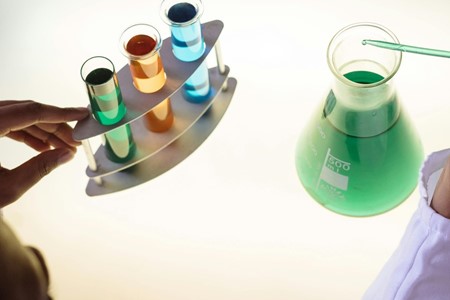
In the chemical industry, various grades of chemicals are available, each defined by its level of impurities. One common grade is Laboratory Reagent (LR) grade, also known as pure grade. Choosing the appropriate chemical grade depends on several parameters that define the purity and impurities present in a chemical.
Understanding difference between a specification sheet and COA, along with testing methods
Specification Sheet
A specification sheet outlines the maximum allowable levels of impurities for a chemical. Each manufacturing company creates these sheets based on general standards for the chemical grade they produce. For LR grade chemicals, the specification sheet follows LR grade standards and lists the minimum purity and maximum impurity levels, such as:
-
Assay (purity percentage): The assay indicates the purity level of the chemical, usually expressed as a percentage. For example, an assay of 99% means that 99% of the substance is the desired chemical, while the remaining 1% consists of impurities.
-
The general impurities present in a chemical are:
-
Sulphate
-
Iron
-
Chloride
-
Lead
These impurity levels are typically expressed in parts per million (ppm).
Parts per million (ppm): PPM is a unit of measurement used to describe the concentration of one substance within another. It indicates the number of parts of a substance per million parts of the total mixture. For example, 1 ppm means one part of the substance per million parts of the solution.
The specification sheet does not indicate the exact impurity levels in a particular batch.
Certificate of Analysis (COA)
For precise details about a specific batch, a Certificate of Analysis (COA) is used. A COA is prepared for each batch of material supplied and includes detailed information such as:
-
Name of the receiving company
-
Batch number
-
Quantity
-
Purity level
-
Exact levels of impurities / Impurities within Acceptable limit
Testing Methods
Qualitative Testing
Some companies perform qualitative testing, which involves comparing impurities to a standard chemical. This method does not provide exact impurity levels but confirms whether the impurities are within acceptable limits specified in the specification sheet.
Quantitative Testing
Other companies use quantitative testing to measure the actual and exact levels of impurities in a chemical.
Summary
When deciding on the type of chemical grade to use, companies rely on specification sheets for general impurity limits and Certificates of Analysis (COA) for detailed batch-specific information. Both qualitative and quantitative testing methods play vital roles: qualitative testing ensures compliance with impurity limits, while quantitative testing provides precise measurements for detailed analysis.